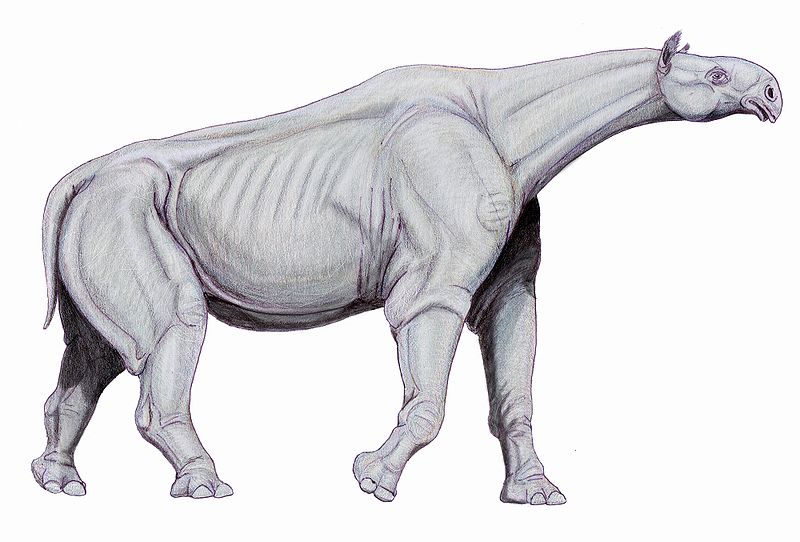 |
 |
 |
 |
 |
Produced
by the Population Genetics and Evolution class, Furman University |
||||
 |
 |
 |
 |
 |
Produced
by the Population Genetics and Evolution class, Furman University |
||||
 |
The
Paleogene: Paraceratherium |
 |
||
| Paraceratherium
is the largest known land mammal to have walked the earth (Wikipedia 2010).
This genus of creatures grew up to 18 feet tall at the shoulder and 28
feet long, not including the tail (NationMaster 2010). A relative of the
rhinoceros, Paraceratherium fed on the leaves and twigs of trees
and large shrubs (Wikipedia 2010). The giant had long, tusk-like upper
teeth and a tapered head with a hornless snout (Wikipedia 2010). These
herbivores were widely distributed across Asia (Antoine, et al. 2004). Much is known about the bone structure of these organisms, but some uncertainty still remains in relation to the differences found among the fossils. Paraceratherium was first discovered in 1911, and although Baluchitherium and Indricotherium were each initially believed to be of a separate genus, the three names are now commonly used synonymously (NationMaster 2010). Some argue that the degree of differences in skeletal measurements between Paraceratherium and Indricotherium, particularly of skull and teeth measurements, could be explained by sexual dimorphism, supporting the notion that the two are of the same species (Wikipedia 2010; NationMaster 2010). Page by Lin-Lin Zhao |
 |
| Paraceratherium. Picture From: Wikipedia. | |
| Antoine PO, Ibrahim Shah SM, Cheema IU, Crochet JY, de Franceschi D, Marivaux L, Metais G, and Welcomme JL. 2004. New remains of the baluchithere Paraceratherium bugtiense (Pilgrim, 1910) from the Late/llatest Oligocene of the Bugti hills, Balochistan, Pakistan. J Asian Earth Sci 24: 71-77. NationMaster. 2010.Paraceratherium. 2010. www.NationMaster.com. Accessed April 12, 2010. Wikipedia. 2010.
Paraceratherium. Accessed April 12, 2010. |